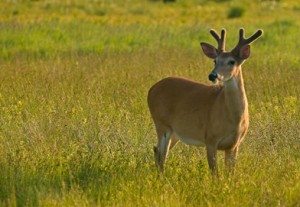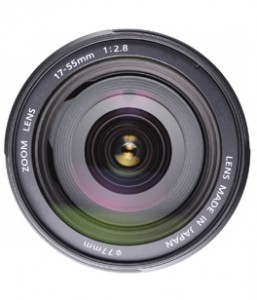A Look at Lenses - Which is Best For You?
July 12, 2012 by Marie Joabar
 Whether you shoot flowers with a macro lens, landscape or family snap-shots with a mid-range zoom, or sports or wild life with a telephoto, the lens you use makes all the difference in the quality of the image as well as the ease with which you manage exposure. The choices are many; primes, zooms, super zooms, fixed or variable apertures, macros and more.
Whether you shoot flowers with a macro lens, landscape or family snap-shots with a mid-range zoom, or sports or wild life with a telephoto, the lens you use makes all the difference in the quality of the image as well as the ease with which you manage exposure. The choices are many; primes, zooms, super zooms, fixed or variable apertures, macros and more.
A look at some of the terms used to describe them may help explain the capabilities of the lens you own, or assist you if you are looking for additional lenses to add to your gear. A visit to your lens manufacture’s website can also provide some very useful information. (See their links and a short glossary at the end of this article.)
PRIME or ZOOM: A “prime” lens has just one focal length and can be found from extreme wide angle such as 10mm to the super long telephotos used on the sidelines in sports like the 600mm lens or the new 800mm lens that Nikon just announced today. Zooms lenses offer a range of focal lengths and are handy as they reduce the need to change lenses often.
- Because there is just one focal length in a prime lens, they are easier to build, lighter in weight, and usually cost less than most zoom lenses.
- The biggest appeal of prime lenses is their ability to gather a large amount of light due to their being built with a large aperture opening. This is especially useful when shooting in low light or in situations when faster shutter speeds are needed.
 FIXED or VARIABLE APERTURE: When looking at lens options, you may see two lenses with the same focal length but with a considerable difference in size, weight, and price. This is because one has a fixed aperture while the other lens’ aperture will vary with the zoom range.
FIXED or VARIABLE APERTURE: When looking at lens options, you may see two lenses with the same focal length but with a considerable difference in size, weight, and price. This is because one has a fixed aperture while the other lens’ aperture will vary with the zoom range.
- The fixed aperture lens can remain open at the largest aperture, say f2.8, regardless of how far the lens is zoomed. This allows more light to enter the lens proving more options when choosing exposure settings. These lenses also use the highest quality glass and are priced accordingly.
- A variable aperture lens on the other hand will have a smaller aperture range like f3.5 to f5.6 which lets in less light; when not using the zoom, the aperture can open up to f3.5 but as it zooms out, the aperture is limited to the smaller opening of f5.6.
 GO WIDE: For travel and landscape photography, interior shots, family and group photos, a wide angle zoom lens works great. These can be found in many focal lengths such as 12-24mm, 17-35mm, 18-55mm, etc. The lower the number the wider your field of view, the more you can include in the frame.
GO WIDE: For travel and landscape photography, interior shots, family and group photos, a wide angle zoom lens works great. These can be found in many focal lengths such as 12-24mm, 17-35mm, 18-55mm, etc. The lower the number the wider your field of view, the more you can include in the frame.
For sports, birding, wildlife, or just capturing subjects in the distance, a telephoto lens is needed. The focal length should be determined by how much magnification you need and your budget. Size and weight are also important considerations. A 70-200mm, 70-300mm, or a 55-200mm are some good all-purpose telephoto zoom lenses and are great for travel and landscape photography. For wildlife and birding however, you’ll do better with a focal length of 300, 400, or 600mm. These are large, heavy and quite pricey due to the quality of elements and technology in design.
GET CLOSE: Many lenses today offer “macro” capabilities which allows for closer focusing. However, only a true macro lens will give you a 1:1 reproduction ratio (the image on the sensor is the same size as the subject itself). Macro lenses, although pricey, offer superior image quality and edge to edge sharpness and are also a good choice for a portrait lens, especially the 90 or 105mm.
SUPER ZOOMS: These lenses can be found in the range of 28-300mm, 18-200mm, 18 - 270, etc. They are ideal when you need to travel light or simply don’t like to change lenses. Typically, these aren’t quite as sharp at all focal lengths and are a bit slower in terms of the amount of light they let in. These can be found by camera manufactures as well as some third party brands such as Tamron and Sigma.
EXTENDERS: When your telephoto isn’t long enough, or weight or cost factors prevent the purchase of a larger lens, consider using an extender or a tele-convertor.
- These fit between the body and lens and come in the range of 1.4X and 2X increasing the focal length accordingly.
- The trade-off is the loss of light by a stop or two, slower focusing speeds and a slight reduction in the quality of the lens. It is best to buy the camera manufactures brand as they offer the highest quality.
- They are matched specifically to lenses and lens types so before rushing out to buy one, make sure it will work with your lens.
SPECIALTY LENSES: Often referred to as Perspective Control (PC) lenses, or Tilt-Shift lenses, the lens can be moved parallel to the sensor which reduces the converging lines when photographing tall buildings. These are quite pricey and often used to shoot architecture.
LENS STABILIZATION: Most lens manufacturers offer some type stabilization on certain lenses which is extremely helpful when shooting in locations where tripods are prohibited or when longer shutter speeds are needed. Canon calls theirs Image Stabilization (IS), Nikon uses Vibration Reduction (VR), other brands use the terms, Anti-Shake (AS), Sensor-Shift and Steady-Shot, etc. These lenses will of course cost more than the non-stabilized alternatives but are worth it.
- The Canon and Nikon stabilized lenses feature gyros and floating elements inside the lens which move and correct for camera shake caused by hand holding when using a slow shutter speed.
- Sony, Pentax and Olympus have built this technology into the camera body so it can be used with all their lenses.
Regardless of camera brand, there is a vast assortment of lenses to choose from. What you’re shooting will dictate which one to use, the best choice being the lens that matches your shooting needs and your budget.
 Below are some links to different manufacturers websites with tons of information pertaining to lenses.
Below are some links to different manufacturers websites with tons of information pertaining to lenses.
Canon Lenses: http://shop.usa.canon.com/webapp/wcs/stores/servlet/subCategory_10051_10051_-1_29751
You’ll find this link to Ken Rockwell is a great resource for Nikon lens technology, old and new. http://www.kenrockwell.com/nikon/nikortek.htm
Nikon Lens Line-up: http://imaging.nikon.com/lineup/lens/list.htm
Olympus lenses and great tips on shooting in their Shooting Guide http://www.olympusamerica.com/cpg_section/oima_lens_shooting_guides.asp
Pentax has a large selection of lenses, find them on this site. http://www.pentaximaging.com/camera-lenses?gclid=CJDlgpiZlLECFQff4Aodq3Iafg
Much can be learned from the Tamron website: http://tamron-usa.com
Some Nikon and Canon lens lingo defined.
NIKON ED: Low dispersion glass removes chromatic aberrations (distortions) for sharper images.
G: Nikon removed the aperture ring on the lens. (Aperture needs to be adjusted electronically.
DX: Lenses designed to cover the smaller sensors, (24mm) of most DSLRs. If used on a full frame sensor camera, there will be vignetting (black corners) unless the camera is set to FX to match the lens coverage area.
IF: Internal Focusing lenses don’t extend outward when focusing but instead focus internally.
SW: Silent Wave lenses have a motor inside allowing it to focus quicker and smoother.
CANON EF: Canon’s term for Auto focus
EFS: Auto focus lenses designed for use with the smaller size sensors, NOT with the full frame sensor.
USM: Ultra Sonic Motor - Canon’s focusing motor is built into the EOS lenses. USM lenses are fast and quiet.
STM: New stepper motor technology enables fast, continuous focus when recording moving subjects - ensuring movies will be smoother and clearer than ever before.
L: Low dispersion glass removes chromatic aberrations for sharper images. L series lenses are top of the line.
